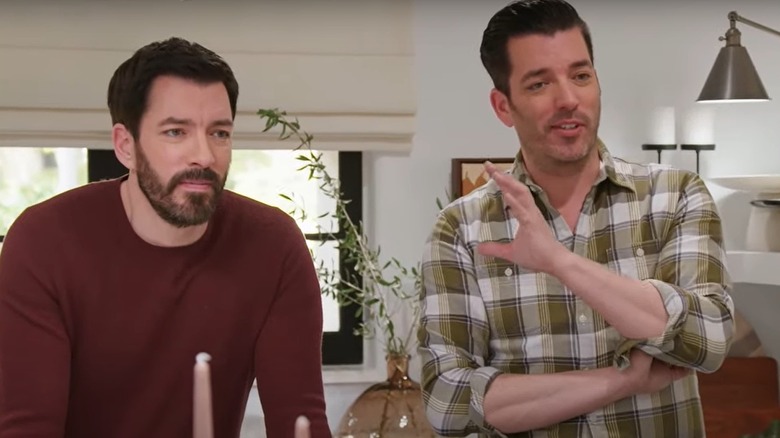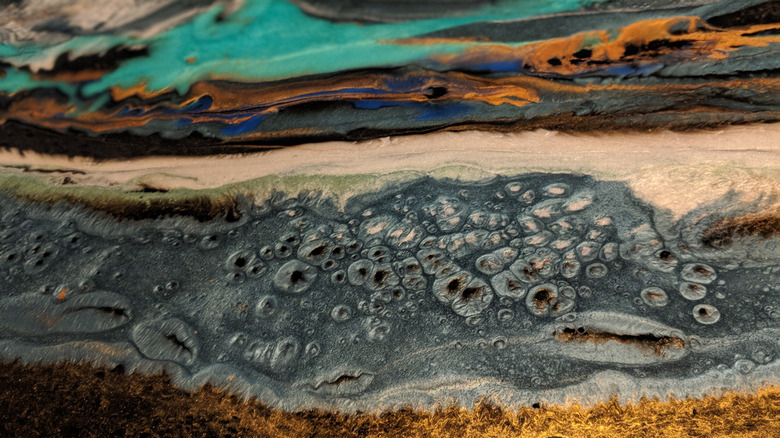The Countertop Mistake The Property Brothers Wish People Would Stop Making
Everyone wants to save money where they can, especially with prices rising at an alarming rate. It's no wonder design hacks that fake the look of high-end materials are blowing up the internet. However, they aren't all winners, and some end up costing you more money in the long run, especially when it comes time to sell your home.
HGTV favorites Jonathan and Drew Scott know something about selling homes. They flipped their first home in college and have helped clueless homeowners make profitable design decisions ever since over for 14 seasons of "The Property Brothers." So which high-end replica design trend do the Property Brothers warn homeowners to avoid? "Don't epoxy your countertops," Jonathan Scott exclaims in an Instagram video for Good Housekeeping. "It never lasts. It starts to look even worse once it begins to peel away," he continues. In the video, they further explain that these types of DIY projects take value off your home when it comes time to sell. As Jonathan advises, "Invest in permanent solutions."
The brothers' knowledgeable mix of home renovation (Jonathan) and real estate expertise (Drew), make them a team worth listening to when it comes to home advice, but what is the epoxy countertops trend they speak of? Long story short, it's when epoxy – a liquid that cures into a hard shell and is typically used in craft projects or as an adhesive – is poured as a coating over your current countertops for a whole new look. Note that epoxy doesn't come as pre-made countertop slabs. You can see the appeal: Purchase an epoxy kit and get the look of high-end marble without the high price or cost of installation, right? But you'd do well to listen to the Scotts' advice.
The downsides of epoxy countertops and the best alternative
There are many factors that can impact an epoxy countertop's durability over time, starting with the DIY installation. Pouring epoxy is an extremely messy and difficult process in which 100 things can go wrong. Due to the chemical reaction taking place once the solution is mixed, you only have a set amount of time to complete the project, and once the epoxy hardens, there's no going back. You may be stuck with your installation mistakes for years, or have to redo the project completely. You'll not only be out the $200 for the epoxy kit, but you'll probably have to scrap your existing countertops, as well. With all of that in mind, pouring your own epoxy could add up to more than the cost of brand-new, premade counters of a more initially expensive material.
Depending on the quality of the epoxy and your proficiency at pouring it, the epoxy may not stand up over time. Some epoxy cures too soft, making it vulnerable to dents, while some is too hard, making it brittle and easily chipped. Fixing dents and getting scratches off of epoxy is much more difficult than with other materials. Epoxy also absorbs stains and yellows in sunlight. So even if your epoxy was poured correctly and resistant to peeling, over several years you could be stuck with yellowed, stained countertops.
There are many great alternatives to epoxy when it comes to kitchen countertop materials, and many are even more cost-effective. For his own home, Jonathan Scott uses Laminam. "It has the beauty of real stone," Scott says in his house tour, but as he elaborates, "You never have to worry about stains, it's extremely easy to clean."

